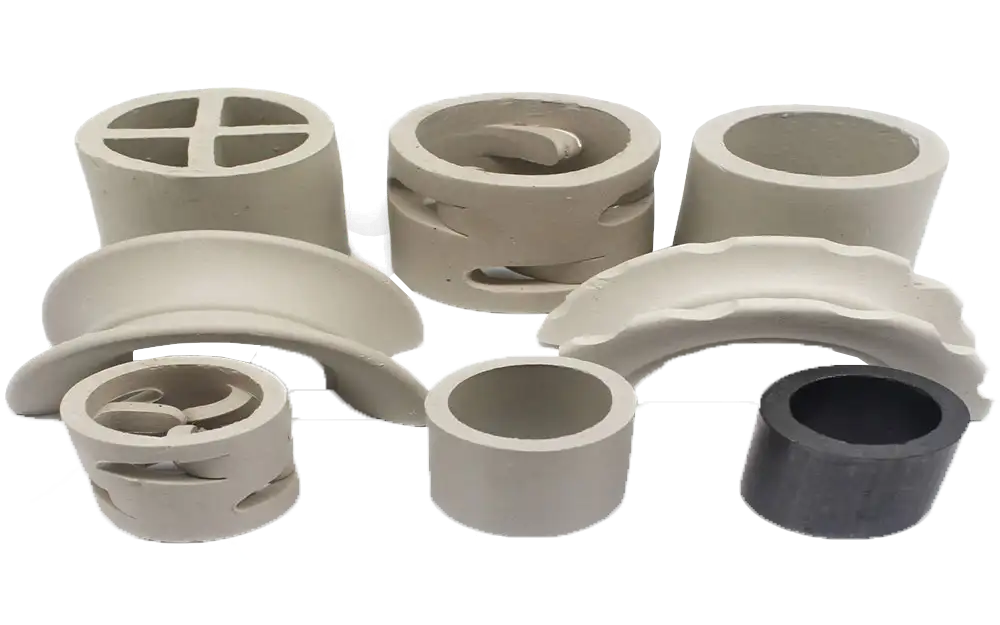Random packing, also known as tower packing, consists of irregular-shaped pieces of material used to enhance mass transfer in various columns, including distillation columns, absorption columns, and others. These packing materials are available in various materials like plastic, steel, and ceramic and come in different sizes to suit specific customer requirements.
Advantages of Random Packing
The primary benefits of utilizing it include:
Increased Liquid-Gas Contact Area
Random packing elements create a high surface area for vapor-liquid interaction, accelerating mass transfer and expediting the separation process.
Enhanced Separation Efficiency
By improving separation efficiency, it contributes to reduced energy consumption and increased profitability.
Reduced Pressure Drop
It exhibits low pressure drop, facilitating smoother and more efficient operation of distillation towers and absorption columns.
Improved Mass Transfer
It promotes effective mass transfer, leading to improved separation performance.
Versatility for Diverse Applications
These packing materials finds applications in various columns with diverse separation tasks.
Types of Random Packing
These packing materials comes in various shapes, each with its own advantages and limitations. Some common forms of it include:
- Super Ring: Offers high surface area and low pressure drop.
- Pall Ring: Provides excellent mass transfer and low pressure drop.
- Saddle: Features high capacity and low pressure drop.
- Raschig Ring: Exhibits good mass transfer and low pressure drop.
- Dixon Ring: Promotes efficient mass transfer and low pressure drop.
- Intalox: Offers high surface area and low pressure drop.
Selecting the Appropriate Random Packing
Choosing the right random packing for a specific application depends on various factors, including the type of fluid, operation type, operating temperature, operating pressure, and column capacity.
When selecting it, consider the following aspects:
- Packing Material: The packing material should be compatible with the fluids being used and resistant to corrosion and erosion.
- Packing Shape: The packing shape should maximize the surface area for vapor-liquid contact.
- Packing Size: The packing size should be selected based on the capacity of the distillation tower or absorption column.
- Pressure Drop: The pressure drop of the packing should be within acceptable limits.
Applications of Random Packing
Random packing finds widespread applications across various industries, including:
- Oil and Gas Industry: Hydrocarbon separation, natural gas purification, and sulfur recovery.
- Chemical Industry: Production of solvents, acids, and other chemicals.
- Pharmaceutical Industry: Manufacturing of drugs, antibiotics, and vitamins.
- Food Industry: Oil refining, juice production, and extract extraction.


Leave a Reply